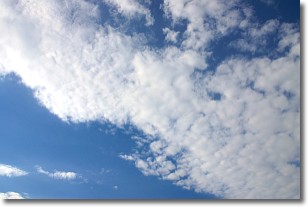Weather Alert in Wyoming
Fire Weather Watch issued August 3 at 1:08PM MDT until August 8 at 6:00PM MDT by NWS Cheyenne WY
AREAS AFFECTED: North Laramie Valley/Shirley Basin; Ferris/Seminoe/Shirley Mountains; North Snowy Range Foothills; Southern Laramie Valley; Southern Laramie Range
DESCRIPTION: ...MULTI-DAY CRITICAL FIRE WEATHER CONDITIONS ARE EXPECTED THIS WEEK WITH LITTLE OVERNIGHT RELIEF... .A multi-day critical fire weather event is expected this week due to low RH values into the teens and single digits, alongside poor overnight recoveries and gusty winds. Overnight recoveries may rise a little higher or winds a bit less breezy on some days, but overall conditions will be poor for a majority of the week. The National Weather Service in Cheyenne has issued a Fire Weather Watch, which is in effect from Tuesday afternoon through Friday afternoon. * AFFECTED AREA...Fire weather zones 420, 421, 427, 428, and 429. * WIND...Gusting 20-30 mph, isolated gusts 35-40 mph. * HUMIDITY...5 to 15 percent; overnight recoveries 25 to 45 percent. * IMPACTS...any fires that develop will likely spread rapidly. Outdoor burning is not recommended.
INSTRUCTION: A Fire Weather Watch means that critical fire weather conditions are forecast to occur. Listen for later forecasts and possible Red Flag Warnings.
Want more detail? Get the Complete 7 Day and Night Detailed Forecast!
Current U.S. National Radar--Current
The Current National Weather Radar is shown below with a UTC Time (subtract 5 hours from UTC to get Eastern Time).

National Weather Forecast--Current
The Current National Weather Forecast and National Weather Map are shown below.

National Weather Forecast for Tomorrow
Tomorrow National Weather Forecast and Tomorrow National Weather Map are show below.

North America Water Vapor (Moisture)
This map shows recent moisture content over North America. Bright and colored areas show high moisture (ie, clouds); brown indicates very little moisture present; black indicates no moisture.

Weather Topic: What are Stratus Clouds?
Home - Education - Cloud Types - Stratus Clouds
 Next Topic: Wall Clouds
Next Topic: Wall Clouds
Stratus clouds are similar to altostratus clouds, but form at a
lower altitude and are identified by their fog-like appearance, lacking the
distinguishing features of most clouds.
Stratus clouds are wider than most clouds, and their base has a smooth, uniform
look which is lighter in color than a nimbostratus cloud.
The presence of a stratus cloud indicates the possibility of minor precipitation,
such as drizzle, but heavier precipitation does not typically arrive in the form
of a stratus cloud.
Next Topic: Wall Clouds
Weather Topic: What are Altocumulus Clouds?
Home - Education - Cloud Types - Altocumulus Clouds
 Next Topic: Altostratus Clouds
Next Topic: Altostratus Clouds
Similar to cirrocumulus clouds, altocumulus clouds are
characterized by cloud patches. They are distinguished by larger cloudlets
than cirrocumulus clouds but are still smaller than stratocumulus clouds.
Altocumulus clouds most commonly form in middle altitudes (between 2 and 5 km)
and may resemble, at times, the shape of a flying saucer.
These uncommon formations, called altocumulus lenticularis, are created by uplift
in the atmosphere and are most often seen in close proximity to mountains.
Next Topic: Altostratus Clouds
Current conditions powered by WeatherAPI.com




